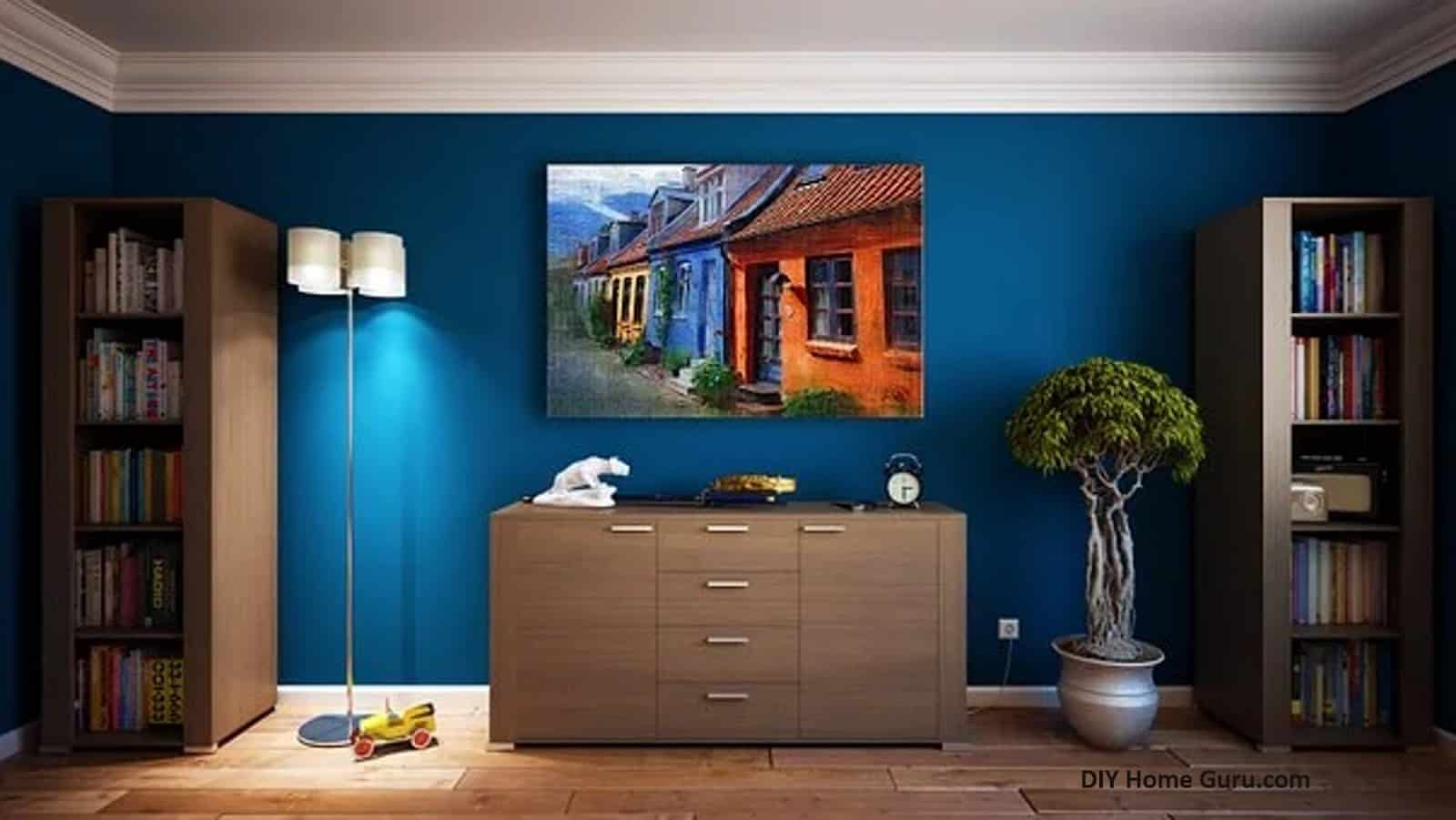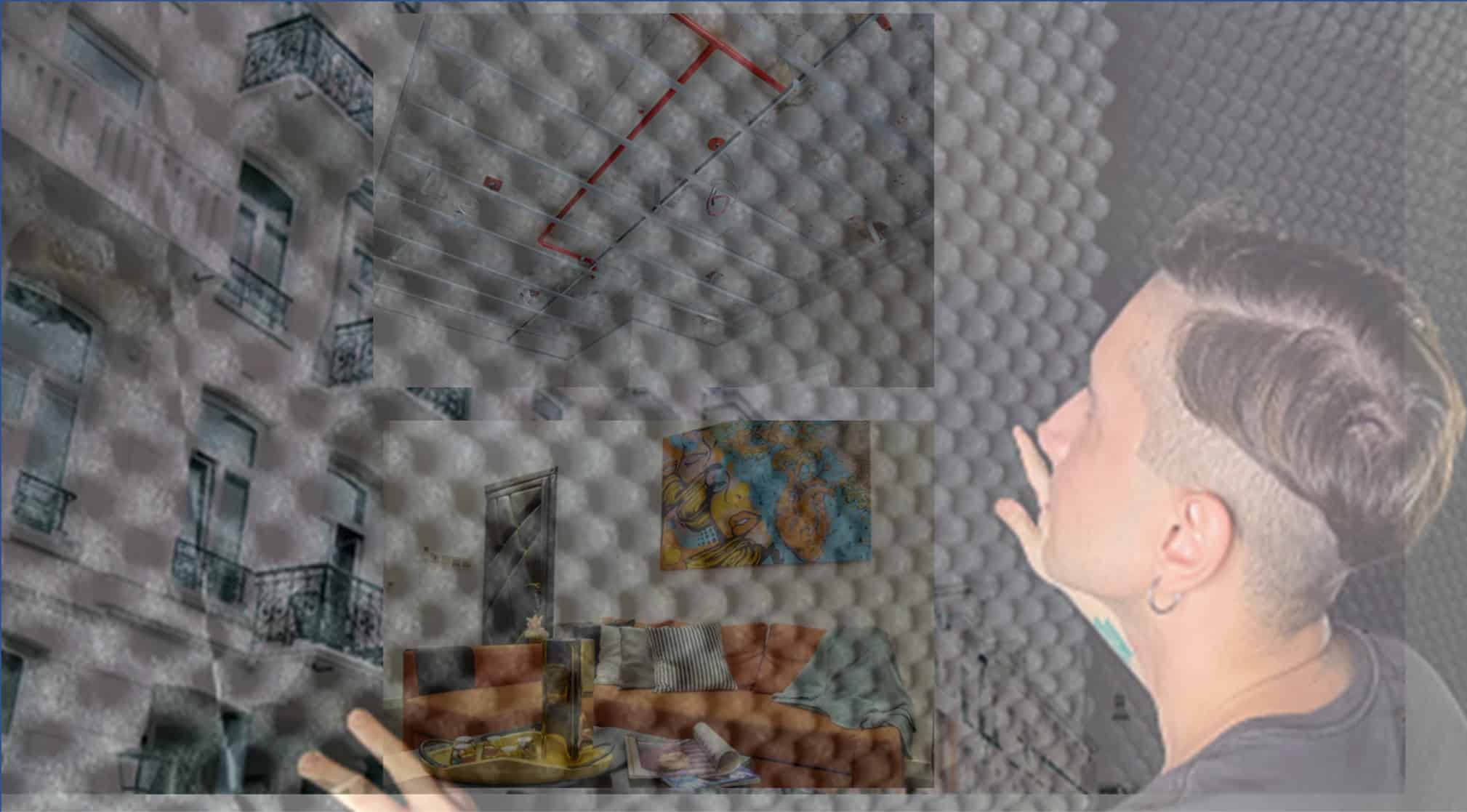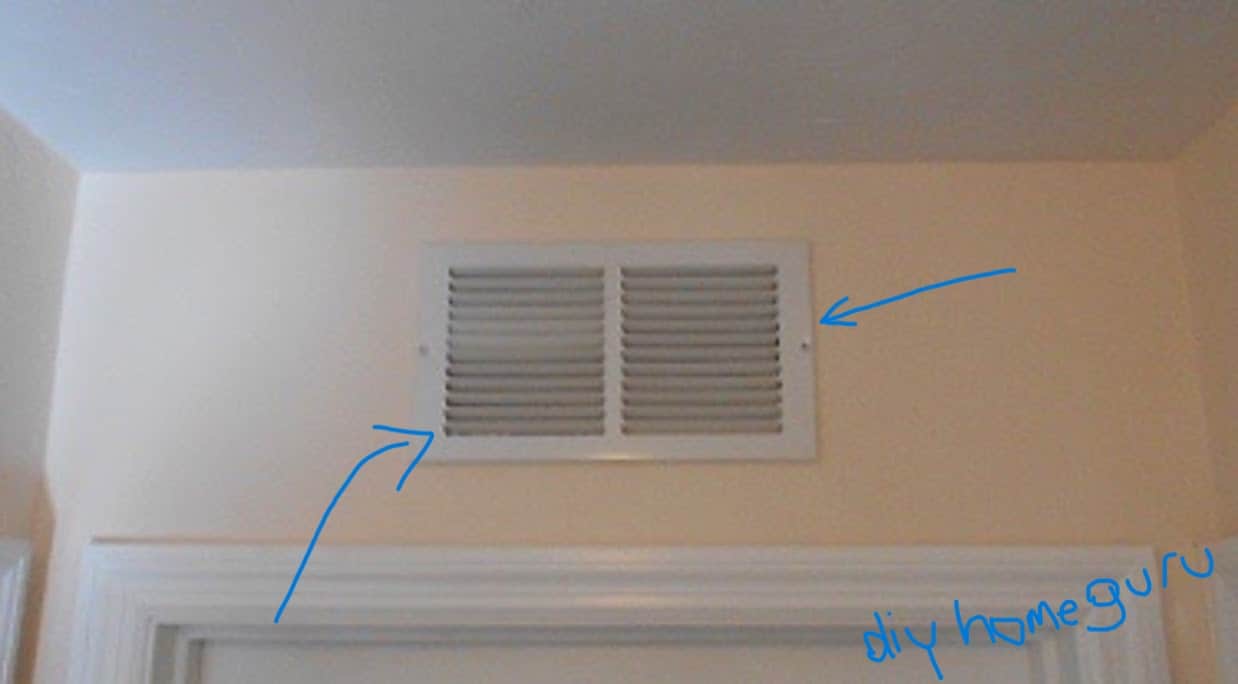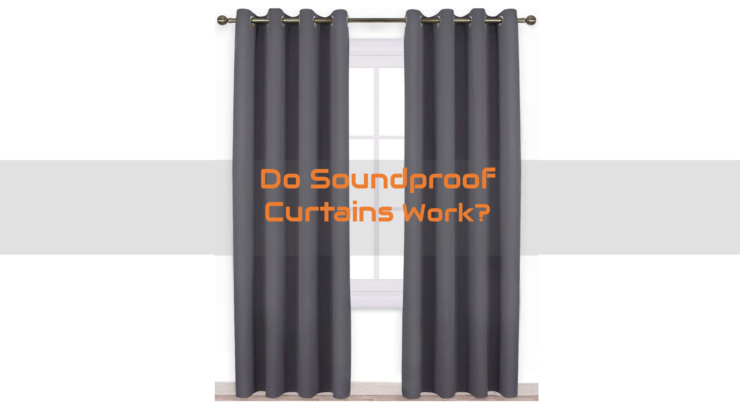Discovering how to soundproof a doorway is a must, especially if you need a little peace of mind and solace in your home. Or, just to reclaim a sanctuary or a little room within the house for a home office.
We pass through these doors a million times throughout the day and when we observe the doors closely we realise that is the weakest link when it comes to keeping noise from entering or leaving the space.
The doors swung back and forth on the door frame in a way that makes it easy to accommodate our movements. For the door to work efficiently, there are always gaps between the floor and the door, between the door and the door frame.
Interior doors are normally not as important for security as the exterior front doors, and as a result contractors tend to buy thinner much lighter interior doors that does nothing to keep sound from traveling in or out of the space.
In this article I will outline a number of strategies that you may use to soundproof a doorway.
1. Seal All The Gaps And Cracks
If you can see outside the room between the gaps of the door and the outer surfaces it means that the room is not soundproof. The first thing that you need to do then is to seal up all gaps and cracks. Sealing up those open spaces will go a long way in blocking sound from freely traveling through those open spaces.
The best way to identify the spaces between the door and the outer surfaces is to wait until it is dark, turn off the lights inside the room and look for sources of light around the door.
In most cases I found that the gaps are actually between the door frame and the walls. The best solution here is to use expandable foam spray, they are available cheaply on Amazon. The foam is sprayed in the gaps, then it expands filling the gaps. You can cut off the extra foam that bleed from the cracks for a smooth surface that could be painted over.
2. Why Not Use Weatherstripping Tape
Weatherstripping is sometimes used at the bottom of garage door to block out the cold winds. According to the contractor, it can also be used to block out sound. When I heard that, I said perfect, it is a solution that i need for sound proofing the the door and saving a fair bit on my electricity bill.
There are many different types of weather stripping tapes. The cheapest solution is to use the self-adhesive weatherstripping tape. It is very easy to use, just firmly apply along the door frame. The additional benefit is that it also helps to keep the insects out.
The weatherstripping tape is made a foam material and will compress when the door is closed on it creating a tight seal. This seal will reduce the amount of sound travelling through the door opening.
3. Use door gaskets
Another more expensive option is to use the door gaskets. For this one it is a bit more involved and I would suggest that you leave this one to the professional unless you are good with your hands and is a true DIYer.
If you want to give it a go as part of your weekend project then you can buy your door gasket here on Amazon.
If you can not install it yourself you can get a friend, a friend that is very handy with tools to help you with this project. If you are a do-it-yourselfer or a give-it-a-go kind of person then this project is your you.
4. Install a door sweep
Installation of weatherstripping and door gaskets got rid of the noise that travels through cracks and spaces around the top and sides of the door but what about the space between the bottom of the door and the floor? This is usually the biggest space that allows sound to travel through uninterrupted. Here I share with you two easy solutions to get rid of that problem.
The first key solution is to install a door sweep. The cheapest solution that I found to deal with this monster crack is to install a door sweep. The door sweep blocks the gap under the door, between the door and the floor, which drastically reduces the sound that travels through that space.
The door sweep solution is good but it has a major flaw. The problem with the door sweep is that it sweeps along the floor each time you open and shut the door. This backward and forward movement each time the door is opened and closed leads to wear and tear damage.
If you have a bit more money to spend, the second solution is a bit better. You can install a high-tech door sweep. It rises off the floor each time the door is opened and press against the floor each time the door it closed to create a solid seal.
Let us call this one the automatic door sweep. It uses a spring mechanism, encased in the door sweep, to automatically lower the seal when the door is closed and raises it each time the door is opened. Like magic.
It is a bit expensive but is good value for a more pleasing look. It solves the problem of the drag that would be apparent if you use the first solution. That drag, caused by the door sweep opening and closing motion, over time sometimes scratches the floor when dust particles get stuck and then rub on the floor surfaces. It is more pronounced if you have polished wooden flooring.
If you are more of a pro DIYer then you can install the more discrete automatic door sweep that block sound and does not spoil the aesthetics of you door and room. This one involves taking off the door, cutting a grove at the bottom and then installing the automatic door sweep.
Have a look at the automatic door sweep diagrams on the Amazon listing. This is the more expensive of the door sweeps but the best looking. You have to choose the one that best fits your budget.
5. Consider adding soundproof curtains
Installing soundproof curtains can also block some of the sound out because it creates an additional barrier to restrict the flow of sound waves.
Curtains are normally installed at windows but it works well on doors also. The curtains are made of thick materials that function as sound absorbers and dampen the impact of sound.
The is important if you are working on sound related project and do not want sound to reverberate in the room.
I find that is is less of a hassle if I installed the soundproof curtains on the outer side of the interior door. It looks better in that room and hide the entrance of the room that I want to block the noise from entering.
On the inside part of the door I installed a soundproof blanket. I find that this solution works well when i am doing studio work.
It is not too difficult to install soundproof curtains. Just as you did the windows, you will have to install curtain rods above the door frame or on the ceiling. Even Though it is not difficult to install, you will have to be mindful of wires that may be behind the walls.
If you are not confident then get a professional to do the installation of the curtain rods.
Here you will find more information about soundproof curtains.
6. Use A Soundproof Blanket Over The Door
A soundproof blanket can be used to cover the door. We know that soundproof blankets are typically made sound absorbing materials like fiberglass that are helpful in getting rid of almost all unwanted sound. These heavy duty soundproof blankets absorb most sound when placed over the door.
The are heavy in weight, and can be a little challenging to install if you are not very strong. You can install them on sturdy hooks at the back of the door. The are not the best looking but works effectively.
On most occasions they are installed in rooms where function is much better than form. They are usually used in the laundry room to reduce the effect of the sound coming from the washing machine and dryer.
For something a bit more aesthetically appealing, the blankets are usually not visually appealing, you can use audimute isole sound absorber, which is used as a Sound Barrier and Absorption Sheet to block sound.
7. Add soundproofing foam panels
Soundproof foam panels can be a good solution also for soundproofing the door. It is much cheaper than some of the other options and works well.
The foam panels are much lighter than the fiberglass blankets and can be easily hung on the door using hanging Strips.
These strips are usually used for hanging picture frames on walls but it works perfectly here for securing the soundproofing foam panels to the door.
The soundproof foam panels are more visually appealing than the fiberglass blankets. You will not win any design awards by using them but they serve their purpose.
Use them in rooms that you do not use often like the music room, the theater room or the mancave (chillout room for the guys).
Alternatively you can make your own acoustic panel that can be used behind the door whenever you need to control the sound leaving the room. Here is a video demonstrating how you can make it on your own.
The large acoustic panel can be made of foam panels and covered in a textured fabric material. You can use different types of material to make the design on the panel look interesting. Watch the video above to see how it could be easily made.
You could make a simpler one by gluing together some of the smaller foam panels using the everbuild conspray stick to spray contact adhesive.
8. Dampen the sound on the other side of the door
Dampening the sound that would otherwise enter the room is a good idea. If you limit the sound entering the room that you want soundproof the overall effectiveness of the project would be increased.
There are a few simple hacks that you can do to achieve a better soundproofing outcome. You can interrupt the flow of sound by installing bookshelves is the hallway in front of the door. Furnish the rooms with cloth wrapped furniture instead of leather or natural wood. Use curtains in front of the door to reduce the sound entering.
Instead of leaving the walls bear, hang a few canvas painting or canvas wall art on the walls. Like I did in my living room, you can hang a woven rug on the wall, one with a beautiful design. Well the correct name for wall hanging rug is tapestry, lol. You have have a look at a lovely wall hanging tapestry here on Amazon.
Don’t forget that you can install wall hanging curtain to beautify a wall and add a bit more soundproofing.
9. Why Not Use A Rug
Adding a rug to your room is one of the easiest ways to control the sound quality in the room. The rug helps in preventing sound from reverberating as much.
A rug is not a tap that you can use to turn off the sound in the room but it can surely go a long way in dampening the sound in the room to improve sound quality. This is especially important if you are recording sound in the room.
You can try the effect of a rug. Take out all the rug in the bathroom and then talk. Then replace the rugs covers the floor in the bathroom then talk again. You will surely hear the difference.
Hardwood floor or tiled floors allows sound to bounce around in the room creating an echo. By putting the rug on the floor it limits the bouncing of sound around the room.
Don’t forget that installing a rug can brighten up a room. In addition, it helps with improving sound quality. This is surely a win win. Choose a rug that matches the decor of your room.
This well woven lane blue modern rug matches my room, you can choose something else that is more expensive or cheaper that matches your room and fall into your style taste. In some rooms, because rugs can be so beautiful, I attached them on the wall to, again, help with sound quality.
10. Buy a new soundproof door
By a big jump, the most expensive option is to buy a new soundproof door. I would only do this if all the other options were not giving me the results that I desire. A solid door like a fire door is a good insulator of sound.
However, in most new home, a very thin hollow door is normally installed as interior doors. These acts more like a sound amplifier instead of a sound insulator. The solid door do not allow sound to pass through easily.
If you are handy with tools, it is possible to add mass to the door to improve the soundproofing effect. By adding an extra piece of strip to the door you can make it more soundproof. The thicker the door the more it will prevent sound from passing through.
11. Apply sound absorbing paint
You may use sound absorbing paint to control the sound in a room. It is important that you match the color of the paint to the color of the room. You don’t want your room to look tacky.
A coating of sound-absorbing paint can reduce external noise by almost 30 percent.
The sound absorbing paint will keep noises from inside the room from travelling outside as well as noise level of outside from travelling inside.
12. Other options
Magnetic Thermal Insulated Door Curtain
Conclusion
The doorway is notoriously difficult to soundproof. The strategis disclosed above will go a long way to rectify the soundproofing problems identified.
There are a number of options available to you from the cheap option to the more expensive. It is very easy for you to spend a lot of money to solve this problem. It is therefore important that you select the solution that will work for you.
Soundproofing the door is usually a problem so If you found a novel way to soundproof a doorway please share with us.
We are always seeking additional tips to solve this problem, found another way feel free to share with us.





